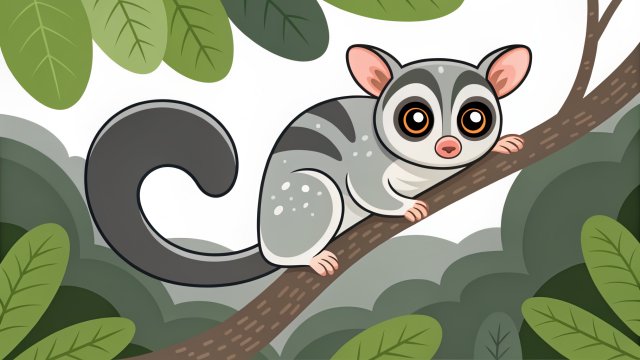Amazing Marsupials: Nature's Pouch-Carrying Mammals
Discover fascinating facts about marsupials, their unique pouches, habitats, diets, behaviors, and roles in culture. Perfect for students and young learners!

Introduction
Marsupials are a special group of mammals best known for carrying and nursing their young in pouches. The group includes well-known animals such as kangaroos, koalas, and wombats. Their scientific classification is Marsupialia, and they differ from other mammals because their babies are born extremely tiny and underdeveloped, then crawl into the mother's pouch to continue growing. Found mostly in Australia and nearby islands, marsupials are a unique and diverse group of creatures adapted to many different environments.
Physical Description
Marsupials vary greatly in size and appearance. The red kangaroo, the largest marsupial, can grow over 1.5 meters (5 feet) tall and weigh up to 90 kilograms (200 pounds). On the smaller side, the sugar glider is only about 24 centimeters (9 inches) long, including its tail. Most marsupials have soft fur, strong hind legs for jumping or climbing, and sharp claws for digging or gripping. A key feature is the pouch (called a marsupium) in females, where their tiny young, called joeys, develop after birth.
Habitat and Distribution
Marsupials are primarily found in Australia, New Guinea, and nearby islands. However, some, like the opossum, live in North and South America. Their habitats range from dry deserts and open grasslands to dense rainforests and mountain regions. Tree-living species like the koala are arboreal, while others like kangaroos are terrestrial and prefer open land.
Diet and Hunting Behavior
- Marsupials have a wide range of diets depending on the species.
- Herbivores like kangaroos eat grasses and plants.
- Omnivores like opossums will eat fruits, insects, and small animals.
- Carnivorous marsupials, such as the Tasmanian devil, hunt birds, reptiles, and even small mammals.
Most forage at night (nocturnal behavior) using their excellent sense of smell and hearing to locate food.
Reproduction and Lifecycle
One of the most fascinating things about marsupials is their reproductive process. After mating, the female gives birth after a short gestation period (often just 12–35 days). The newborn joey, about the size of a jellybean, crawls into the mother’s pouch, where it attaches to a teat and continues developing for weeks or months.
For example, a kangaroo joey stays in the pouch for about 6–8 months. Marsupials typically give birth to 1–3 young at a time, and some species can delay pregnancy during harsh conditions, a process called embryonic diapause.
Behavior and Social Structure
Marsupial behavior varies widely. Kangaroos live in groups called mobs, while koalas are mostly solitary. Many are nocturnal, sleeping during the day and becoming active at night. Some species, like wombats, are excellent diggers and create underground burrows. Others, like sugar gliders, can glide from tree to tree using skin flaps between their limbs. Seasonal movements or migrations are rare in marsupials, but some adjust their behavior based on food and water availability.
Conservation Status
Several marsupial species are at risk due to habitat loss, climate change, and predation by introduced species like foxes and cats. The koala is listed as vulnerable, while the northern hairy-nosed wombat is critically endangered, with fewer than 300 left in the wild. Conservation efforts include protected reserves, breeding programs, and habitat restoration.
Cultural Significance
Marsupials, especially kangaroos and koalas, are national symbols of Australia. They appear on coins, sports team logos, and even the national airline. Aboriginal Australian mythology often features marsupials as wise or spiritual creatures. In South America, opossums are sometimes seen as clever and adaptable survivors in folk tales.
Interesting Facts
- A kangaroo can jump over 3 meters (10 feet) high and travel 60 kilometers per hour (37 mph).
- Some marsupials, like sugar gliders, can glide over 50 meters (164 feet) in a single leap!
- The Tasmanian tiger (thylacine), a large carnivorous marsupial, went extinct in the 20th century, though some claim to have seen it since.
- The pouch opens backward in wombats to avoid getting dirt inside while digging.
- Opossums are immune to snake venom and can survive bites from rattlesnakes and copperheads.

















































